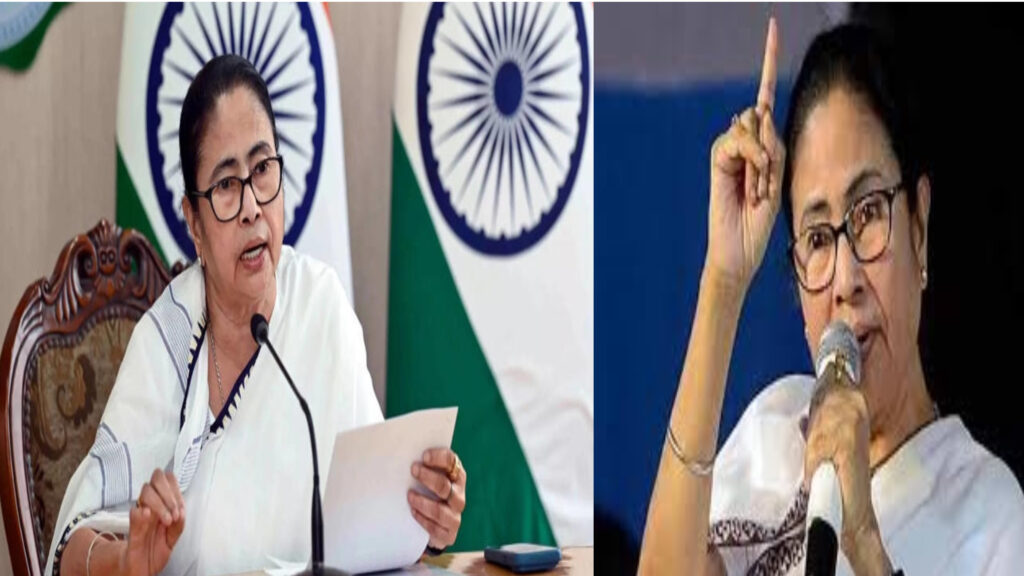West Bengal’s Chief Minister, Mamata Banerjee, has made headlines by announcing a ‘rally for harmony’ in Kolkata on January 22, a day that coincides with the inauguration of the Ram Temple in Ayodhya. This move comes amidst Mamata’s decision to skip the Ayodhya ceremony, which she has labeled as a pre-poll gimmick by the Bharatiya Janata Party (BJP) ahead of the Lok Sabha elections.
Mamata’s decision to lead a rally focusing on unity and harmony is a strategic move that signals her commitment to inclusivity. The procession is slated to begin at the Hazra crossing in south Kolkata and culminate at the Park Circus Maidan, covering key places of worship from different religions along the way, including mosques, churches, gurdwaras, and starting with a visit to the Kalighat temple for puja.
Her choice to skip the Ayodhya ceremony has stirred political discussions, with Mamata asserting, “Before the elections, you are doing gimmicks; go ahead with it, I have no objection.
The Congress party has also weighed in on the matter, accusing the BJP and the Rashtriya Swayamsevak Sangh (RSS) of transforming the Ram Temple ceremony into a “completely political Narendra Modi function.”
Mamata Banerjee’s rally for harmony, therefore, is not just a symbolic gesture but a political maneuver aimed at positioning herself as a leader championing diversity and unity. To understand the significance of this move, it’s essential to delve into the broader political context.
In a country where religion and politics often intersect, events with religious connotations become crucial elements in electoral strategies. The Ayodhya ceremony, being a prominent religious occasion, is no exception. Mamata’s decision to steer clear of this event signals a clear departure from the narrative being pushed by the BJP, which has been eager to associate itself with the Ram Temple construction.
The choice of January 22 for Mamata’s rally is notable. While the inauguration of the Ram Temple is a significant event for the Hindu community, Mamata’s rally aims to embrace the pluralistic fabric of Bengal by traversing through places of worship of various religions. This calculated move reflects her nuanced approach to politics, presenting herself as a leader who values and respects the diversity within her state.
By starting the rally at the Kalighat temple, a revered Hindu shrine, Mamata is making a statement about the harmonious coexistence of different faiths in Bengal. The subsequent journey through mosques, churches, and gurdwaras reinforces the message of inclusivity. This diverse route echoes Mamata’s earlier commitment that as long as her government is in office, there will be no discrimination against any religious or tribal community in Bengal.
Mamata’s stance aligns with her broader political philosophy. She has consistently positioned herself as a leader who prioritizes the welfare and rights of all communities, irrespective of their religious affiliations. Her rally for harmony is an extension of this narrative, a visible display of her commitment to fostering an atmosphere where people of all faiths feel respected and included.
The Congress party’s decision to distance itself from the Ayodhya ceremony further underscores the political polarization surrounding such events. In India, where electoral strategies often hinge on cultural and religious narratives, parties carefully choose their positions to appeal to their voter base. Mamata Banerjee’s rally serves as a counter-narrative to the BJP’s focus on the Ayodhya ceremony, providing an alternative perspective and rallying point for those who prioritize unity over divisive politics.
In conclusion, Mamata Banerjee’s ‘rally for harmony’ is a strategic political move that goes beyond symbolism. It represents a carefully crafted narrative emphasizing inclusivity, diversity, and secularism, setting her apart from the BJP’s focus on the Ayodhya ceremony. As the political landscape continues to evolve, these events and the associated narratives will play a crucial role in shaping public opinion, especially in the lead-up to important elections.

